Medieval castles are iconic architectural structures that emerged during the Middle Ages, spanning from the 5th to the 15th century in Europe. These castles served multiple purposes, including defense, residence, and as symbols of power for the ruling classes. They played a crucial role in shaping the social, political, and military landscapes of the era.
Constructed in strategic locations, such as hilltops or near rivers, castles allowed control over surrounding territories. They housed nobles, knights, and their personnel, affirming their social positions within the feudal system. How were they built? And what was the exact function of the castles?
Table of Contents
What are Medieval Castles?

Medieval castles are architectural structures that were prevalent during the Middle Ages in Europe, spanning roughly from the 5th to the 15th century. Many medieval castles served multiple purposes, including defense, residence, and simply as a symbol of power for the ruling classes of the time. They played a significant role in shaping the social, political, and military landscapes of the era.
During the Middle Ages, castles were primarily inhabited by nobles and their personnel. These powerful individuals held positions of authority within the feudal system and used castles as both defensive strongholds and centers of administration.
The feudal system is the classification of society based on social status. The king or queen has the highest position, followed by lords, knights, and peasants.
To have a position of authority would mean that you belong to either the highest tier or the second tier. So, these castles largely served to affirm and reinstate the social positions of the Medieval elite.
These imposing structures were often constructed in strategic locations, such as hilltops or nearby rivers, to provide a vantage point and control over surrounding territories. The positions allowed the inhabitants to monitor and protect their lands, as well as project their authority over the local populace.
Materials Used for Construction
The materials used in the construction of medieval castles varied depending on the region and the resources available. The stone castle was a popular choice, especially for larger and more permanent structures. Limestone, sandstone, and granite were commonly used due to their durability and strength.
Early castles also utilized wood as a building material. Particularly in the early stages of castle construction, timber castles or partly wooden fortifications were quite popular. Over time, these were substituted with stone castles. Stone walls provided greater protection against enemy attacks while ensuring the longevity of the structures.
Location of Medieval Castles
Medieval castles can be found in various parts of Europe, with notable concentrations in England, France, Germany, and Scotland.
In England, castles such as the Tower of London, Windsor Castle, and Warwick Castle still stand today as prominent examples of medieval fortifications. France can still be proud of the famous Château de Carcassonne and Château de Chillon, while Germany is home to the striking Neuschwanstein Castle and Burg Eltz.
Scotland’s Edinburgh Castle and Stirling Castle are great examples of the stunning architecture of the time.
The good part is, you can even visit these castles today. A visit offers a glimpse into the past and allows you to explore the architectural schools and developments of medieval times. Many castles have been preserved and restored, like the Tower of London and Neuschwanstein Castle.
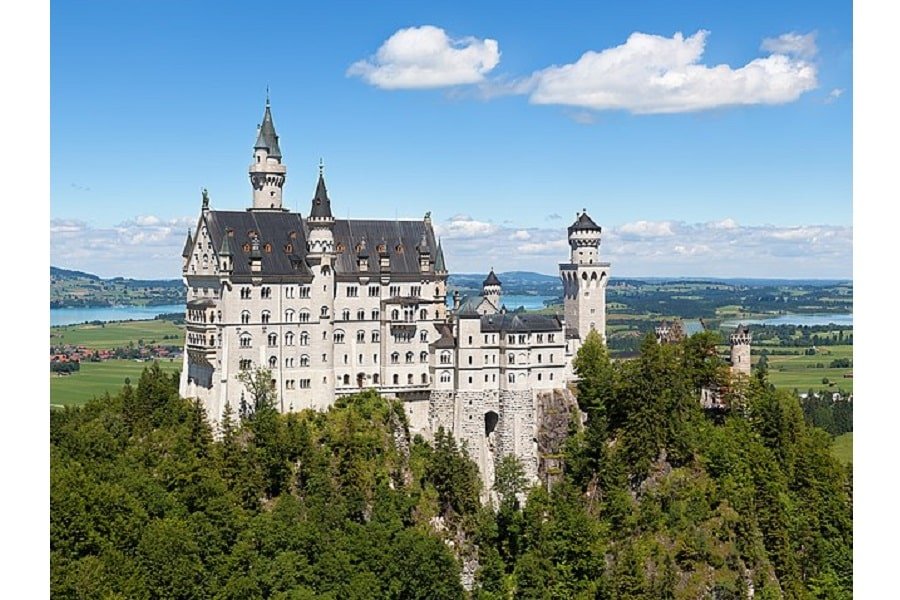
What is the Oldest Castle Still Up?
The oldest medieval castle still standing is generally considered to be Château de Doué-la-Fontaine in France, situated in the Pays de la Loire region. The castle’s origins can be traced back to the 10th century, making it one of the earliest surviving examples of medieval castle architecture. The castle has undergone various renovations over the centuries, but its core structure and defensive elements date back to the medieval period.
Château de Doué-la-Fontaine was originally built as a fortified stronghold for the lords of the area. It was strategically located on a group of rocks that overlooked the nearby town. At the time, there was some political unrest in the area, so the oldest castle in Europe already served as protection for the lords and allowed them to monitor potential invasions from opponents.
Over the years, the castle evolved from a military stronghold to an actual residence for local nobles. Eventually, however, it fell into disrepair. In recent times it has been partially restored and is now open to the public.
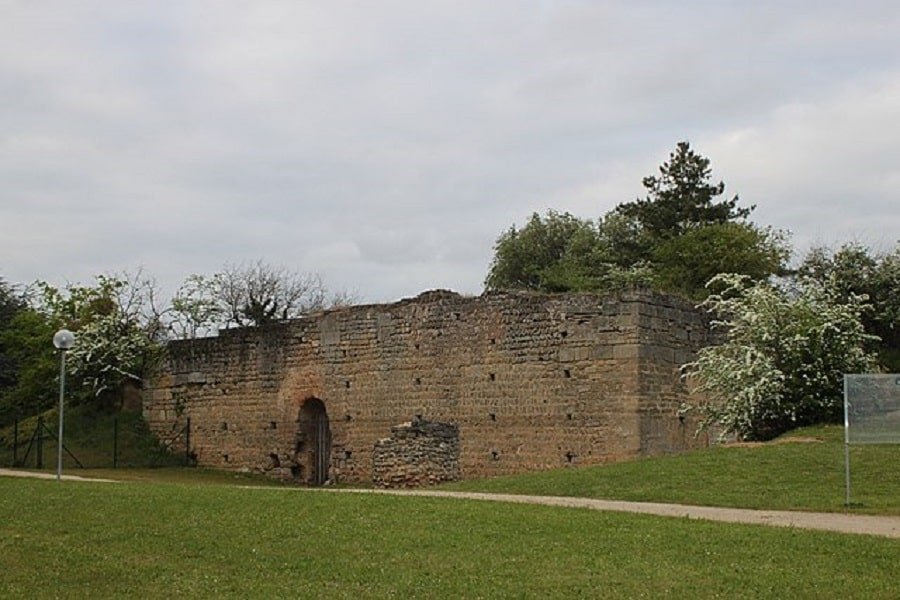
What Does a Castle Look Like?
The outer walls of most castles were constructed with sturdy stone or fortified with thick layers of brick. This design specifically served to protect the inhabitants of the castles. The main gate was the heavily fortified entrance point to the castle. Besides the big doors, ample guards were abundant to protect the royal palace.
Upon passing through the main gate, you enter the castle’s intricate layout, often consisting of two walls. The inner wall acts as the castle’s primary defense. The outer wall provides an additional layer of protection and acts as a defensive buffer against potential attackers.
Interior Design
On the ground floor, the castle boasts various functional spaces. These may include storerooms, kitchens, servant quarters, and sometimes even a chapel or a great hall, where important gatherings and feasts took place. This first floor often features robust architecture, with thick walls and just a few windows to enhance security.
Moving up to the upper floors of the castle, you can find the noble family’s living quarters. The impressively decorated upper floors had lavish chambers, a great hall or two, and many private rooms. These areas were adorned with ornate decorations, rich tapestries, and intricate artwork, showcasing the wealth and status of the castle’s occupants.
The most eye-catching detail on the castles is their iconic towers. Rising high above the walls, these cylindrical structures provided strategic vantage points for observing the surrounding landscape and launching defensive maneuvers.
The towers often housed guardrooms, allowing soldiers to adequately respond to the things happening around the castle. Because of this, they could quickly respond to potential threats. Castles were often designed with considerations for comfort and aesthetics too, incorporating places such as courtyards, gardens, and ornate decorations.
What are the 4 Types of Medieval Castles?
While there is a similarity between all of them, several distinct types of castles emerged between the 5th and 14th centuries: Motte-and-bailey castles, stone keep castles, concentric castles, and curtain wall castles.
These four types of castles represent a progression in castle design and reflect the evolving nature of warfare, fortification techniques, and societal needs throughout the medieval period. Each type offered its own advantages in terms of defense, functionality, and status.
Motte-and-Bailey Castles

Motte-and-bailey castles were among the earliest types of medieval castles. They consisted of a large artificial mound called a motte. The motte was topped with a wooden tower. Next to the motte was an enclosed courtyard or bailey, in turn, surrounded by a protective outer wall.
These types of castles were relatively quick and inexpensive to construct but still provided effective defense. They were often built on natural mounds or hills to enhance their defensive position. Examples of motte-and-bailey castles include the Tower of London in England and Château de Guillaume-le-Conquérant in Normandy, France.
Stone Keep Castles
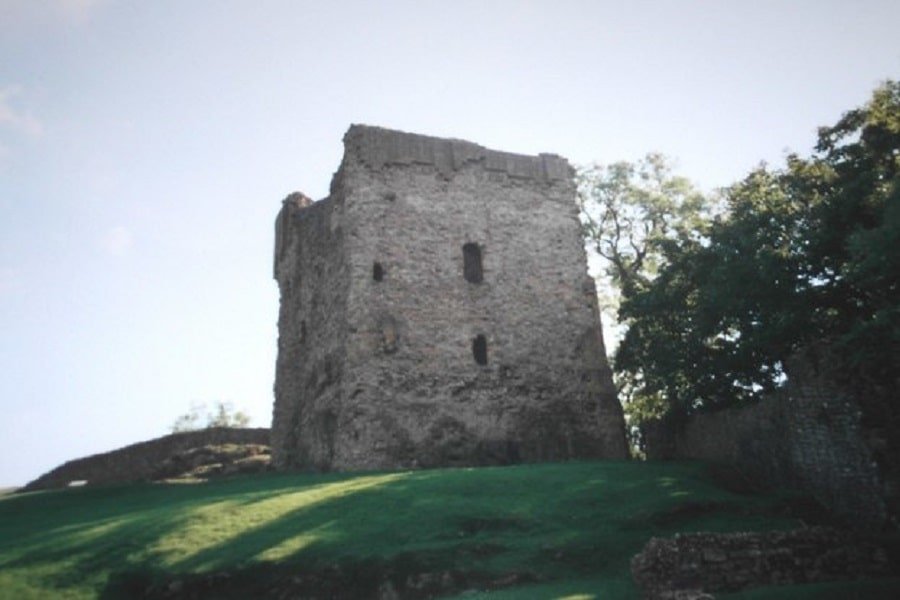
The castles known as stone keep castles emerged in the 11th century and became more prevalent in the 12th century. Their main asset was the ‘keep’, which refers to a type of fortified tower built within the castle. These keeps are also known as donjons, or the great tower.
The massive stone towers featured in these castles were typically cylindrical or square-shaped and mostly served as the main residence and the last line of defense before reaching the residence of the noble. These tall towers had a myriad of other functions, but should mainly be seen as a symbol of power.
The large tower was surrounded by curtain walls, which enclosed a bailey where other structures were located – such as domestic buildings and storerooms. The stone keep castles were more durable and provided better protection than their wooden counterparts. Examples of stone keep castles include Rochester Castle in England and Château de Coucy in France.
Concentric Castles
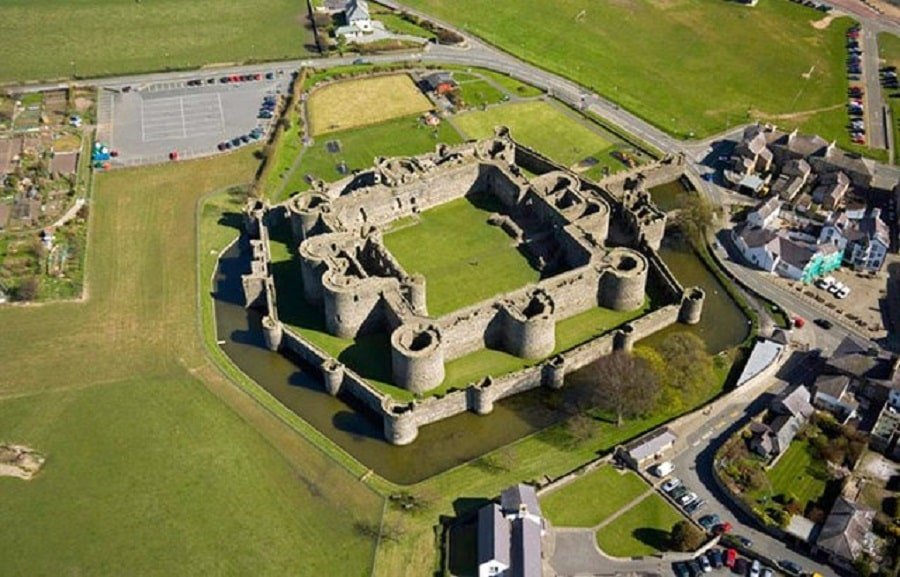
Concentric castles were developed in the 12th and 13th centuries as a response to advancements in siege warfare. A ‘siege’ is a long-lasting attack at a certain city or fort. These castles featured multiple defensive walls, one within another, with each wall having its own set of towers and fortifications.
The ward in the center of the castle housed the keep, while the outer wards contained residential and functional buildings. Concentric castles offered superior defense against sieges by making it more difficult for attackers to breach all the defensive layers.
Siege engines like the battering ram, ballista, catapult, and siege towers were used to overcome the tough defense of the concentric castles.
Curtain Wall Castles
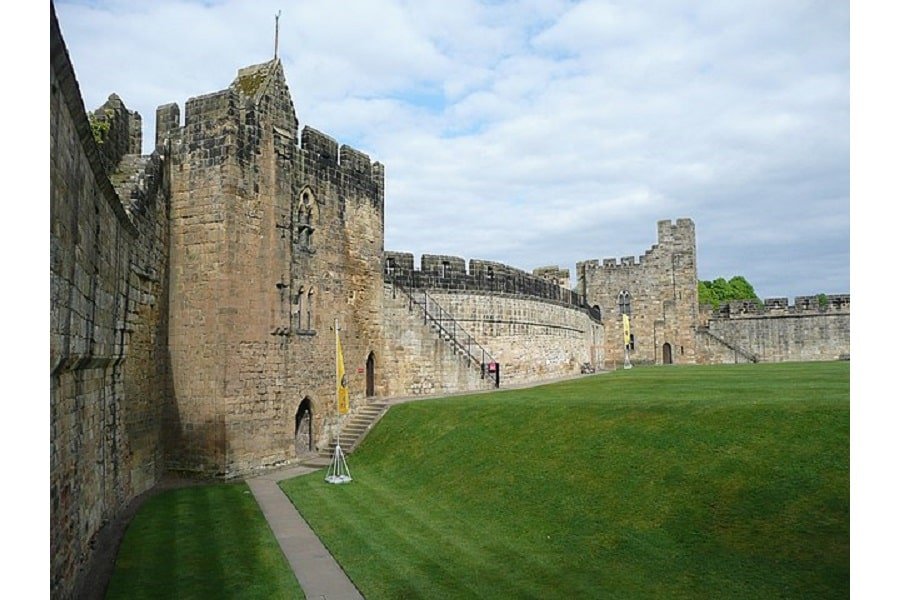
The fourth and last type of castle is the curtain wall castle. These were characterized by a fortified perimeter wall that enclosed a large area, often located atop a natural or artificial mound.
They typically had thick stone walls and towers strategically placed along their length. They featured various buildings inside, such as living quarters, chapels, and workshops.
Curtain wall castles provided a combination of defense, residence, and administration. They were versatile and adaptable, with the ability to accommodate changing needs and architectural styles over time. Harlech Castle in Wales and Carcassonne in France are prominent examples of this type.
Why Were Castles Built?
Castles were built for a multitude of reasons, each tied to the unique circumstances and needs of the medieval period.
First and foremost, castles were built as fortified structures to provide defense against external threats. In addition to defense, castles were symbols of power and control. They represented the authority and dominance of the ruling class over their territories.
They served as residences for the lords and their vassals, fostering hierarchical social connections, and reinforcing the societal design of the feudal system.
Besides defense, a castle built for the ruler served as a strategic political move. The possession of a castle signified control over the surrounding land, enabling the lord to exert their influence and maintain law and order.
How Were Castles Used in Medieval Times?
Castles in medieval Europe served different purposes. In terms of actual usage – as opposed to the advantages they gave in terms of defense and authority –, the castles had an important administrative and political role. They housed administrative offices and were places for tax collection. Other than that, events and misses also took place in the castles, making it a cultural hub for the society.
So the castle served as a focal point for collecting taxes, dispensing justice, and conducting official affairs. The local population would come to the castle seeking the lord’s judgment or resolution of disputes, further reinforcing the central role of castles in administration and the legal system.
Additionally, castles provided economic benefits to the ruling class. They served as hubs for economic activities, creating a convenient space for trade and commerce. Castles often controlled key trade routes or guarded valuable resources, which enabled lords to extract tolls or protect their economic interests.
Also, they housed workshops, granaries, and storage facilities. These storage spaces allowed for stockpiling provisions and supplies, ensuring that the castle could withstand sieges or prolonged conflicts. The storage capacity of castles allowed for the accumulation of wealth and resources, contributing to the economic power and self-sufficiency of the ruling class.
Castles could often even serve as self-sufficient entities, with surrounding lands cultivated to sustain their inhabitants.
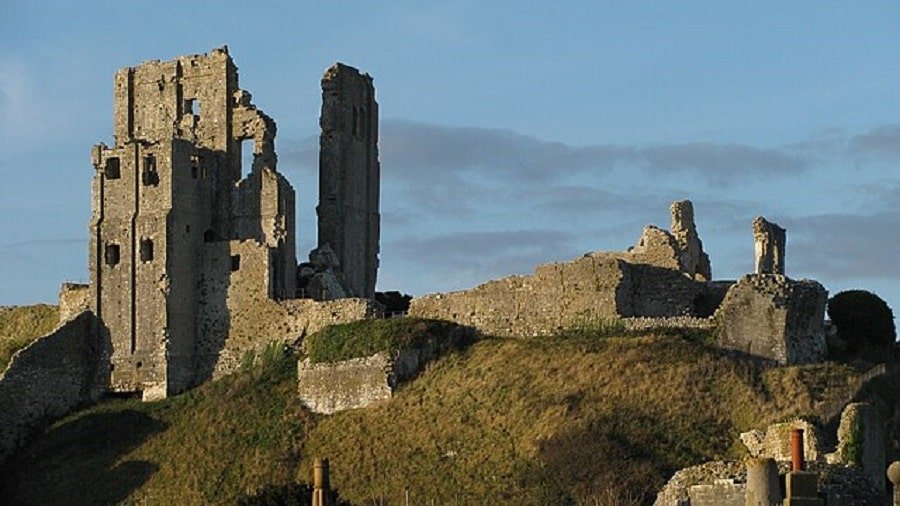
Cultural and Symbolic Significance
Furthermore, castles had cultural and symbolic significance. They were centers of social and cultural gatherings, hosting feasts, tournaments, and other events that showcased the wealth and prestige of the ruling class.
Castles often had chapels or churches within their walls, which acted as spiritual and moral centers of the town or city. These structures reflected the importance of religion in medieval society and reinforced the lord’s authority in matters of faith.
Of Cultures and Castles
As indicated before, medieval castles are concentrated in Europe. The predominance of medieval castles in Europe can be attributed to several historical, cultural, and geographic factors.
While castles or fortified structures existed in other parts of the world – such as Asia, Africa, and the Americas – the specific architectural form and function of medieval castles differed a lot from the other structures.
There are about five differences between the large castles in Europe and those in other locations worldwide. Firstly, it regards architectural styles. In Europe, stone castles were quite common, while in Asia almost everything was constructed with wood.
The way in which the defensive lines were constructed also differed vastly. The medieval Europe castle was protected with drawbridges, arrow slits, and moats. Japanese castles, on the other hand, had thick walls, complex gate systems, and a sort of earthquake protection in place.
Another difference is the use of fortifications. In Europe, a castle was simply an ode to the feudal system and a show of power. On the other hand, Asian castles often incorporated elements of their culture, like samurai features or references to Zen Buddhism.
READ MORE: The History of Buddhism
In that sense, it’s also possible that Asian fortifications were used by the whole community instead of predominantly the elite. That’s also seen in countries like Nigeria, where the fortification was built around the whole town or city instead of just a place for the king to reside.
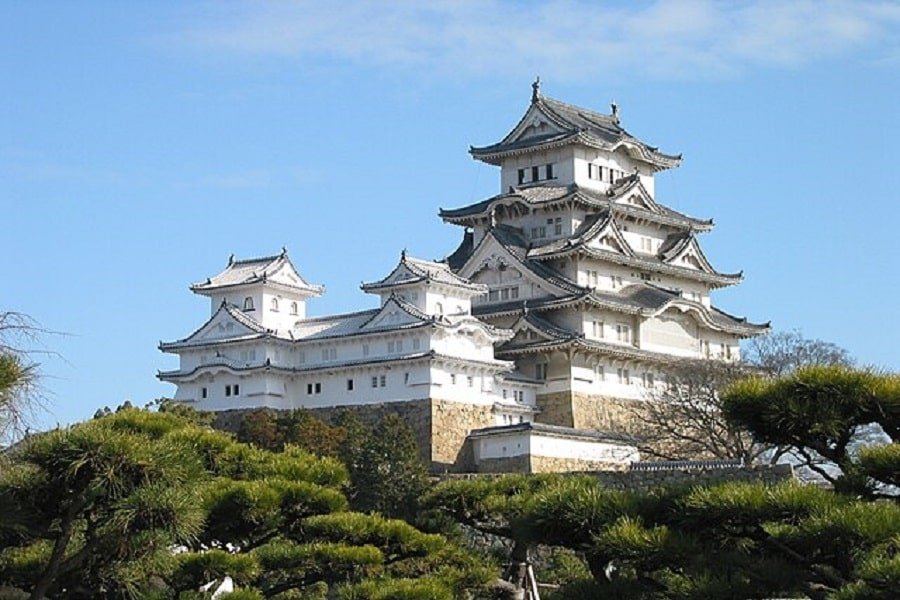
Why Were Castles Built Specifically in Europe?
Still, the question of why castles emerged in the way they did in Europe remains unanswered. There are a couple of reasons why the castles popped up and became important architectural feats in medieval Europe.
Feudal System and Social Structure
The feudal system was central to medieval European society and played a crucial role in the construction of castles. The system was built upon the relationship between landownership and military service, where lords and aristocratic families provided protection to the people in lower societal tiers. In turn, the peasants and medieval knights provided their loyalty and military support.
The feudal system was unique to medieval Europe and was not replicated in the same manner in other parts of the world.
Military Conflicts and Invasions
Another reason for medieval castles popping up in Europe specifically was the numerous military conflicts and power struggles.
Castles provided a strategic advantage, offering protection against enemy attacks and serving as secure bases for launching counter-offensives.
Geographic Factors
Europe’s diverse geography also influenced the distribution and design of castles.
Hilltops, cliffs, and river crossings were frequently chosen as ideal locations for constructing castles due to their natural defensive advantages. Moreover, the availability of materials like stone, timber, and water sources, played a significant role in the construction of castles.
Cultural and Architectural Influences
The specific design is also rooted in a myriad of cultural and architectural movements, such as Romanesque and Gothic styles. These architectural traditions, characterized by robust stone construction, massive walls, towers, and intricate detailing, shaped the design and appearance of medieval castles.
Why Were Castles No Longer in Use After 1400?
Castle building in the middle ages was common, but this trend declined after the 1400s. The decline in the use of castles as military fortifications can be attributed to several factors. Because of technological advancements, shifts in warfare strategies, renewed centralized authority, and changes in architectural trends, medieval castles lost their popularity after the 14th century.
Starting with technological advancements, the development of new military technologies like cannons and gunpowder revolutionized siege warfare. Castles, with their thicker walls and traditional defensive features, became increasingly vulnerable to artillery attacks.
The powerful cannons of the time could breach castle walls, immediately rendering the defensive capabilities of the castles useless. As a result, castles faced greater challenges in withstanding sieges, making them less practical as purely defensive structures.
Secondly, there was simply a shift in warfare techniques. Soon after, sieges became a thing of the past, and military tactics became more diverse, flexible, and adjustable. Armies began to favor field battles and maneuverability, leaving static fortresses like castles less relevant on the battlefield.
Instead of investing resources in maintaining and defending castles, rulers focused on building armies capable of engaging in open-field combat. All in all, this might’ve been the main reason for the demise of castles.
While conquering a castle before allowed the attacker to gain authority over its surrounding land, attackers now occupied the actual lands themselves. So, warfare moved away from castles.
Architectural trends were another reason for the demise of the castles. Medieval architecture simply wasn’t as fashionable anymore from the 15th century onwards. Architectural styles shifted towards comfort, luxury, and aesthetics over defensive features.
The castles were replaced by palaces or manor houses. The nobility and the ruling class sought more comfortable and elegant residences that reflected their wealth and social status, moving away from the austere atmosphere of castles.

Political Changes
Some other reasons for the change in the role of castles can be found in the political changes of the time. After the middle ages, Europe moved away from the feudal system and saw a steep consolidation of power.
The societal focus shifted towards urban centers, where economic, cultural, and political activities thrived, leading to a decrease in the significance of rural castles.
Now, the monarchs and a centralized government were in charge. Because of it, the need for individual lords to fortify their own castles diminished. Kings and queens established standing armies and fortified royal residences to exert control over their territories.
The shift towards centralized authority reduced the number of local lords. There were simply not enough people to actually inhabit the castles in Europe.
It is important to note that, while castles lost their primary military function, many of them were repurposed for other uses. Some castles underwent extensive renovations or were converted into palaces, while others fell into disrepair and were abandoned.
Important Castles in Europe
There are some notable castles that deserve to be mentioned. The largest castle, for example, is the Castle of the Teutonic Order in Malbork, located in Poland.
In Southern France, on the other hand, you can find Carcassonne; one of the best remaining examples of a fortified town in Europe.
Kenilworth Castle
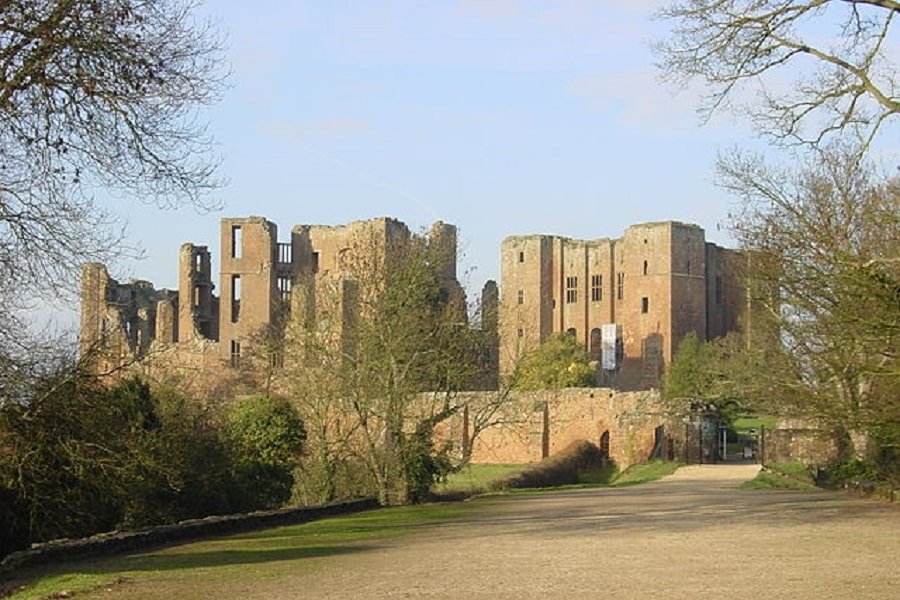
The Kenilworth is famous for its rich history, architectural splendor, and notable connections to English royalty. Located in Warwickshire, England, the castle’s origins date back to the 12th century.
Over the centuries, it served as a royal residence that witnessed significant historical events. Kenilworth Castle was a favored residence of kings and queens, including King John, Henry III, and Queen Elizabeth I.
READ MORE: Queen Elizabeth Regina: The First, The Great, the Only
Its rich history, royal associations, and romantic allure have made Kenilworth Castle a popular tourist attraction and a symbol of England’s medieval heritage.
Pevensey Castle

Pevensey Castle is another medieval fortress located in England, in the village of Pevensey in East Sussex. Originally built by the Romans in the 4th century AD as a Saxon Shore fort, Pevensey Castle was constructed on the site of an earlier Roman fortification.
The castle’s purpose was to defend the coastline against potential invasions from the sea and became one of the most valuable castles in England in the process. It played a crucial role in protecting the region throughout the Roman, Saxon, and Norman periods.
READ MORE: The Complete Roman Empire Timeline: Dates of Battles, Emperors, and Events
The castle’s most notable moment in history occurred in 1066, during the Norman invasion of England. It was here that William the Conqueror landed his invading army and established a small base on the beach in England.
The Normans used the Pevensey castle as a base before moving inland to engage in the historic Battle of Hastings, which ultimately led to William’s victory and his subsequent coronation as the King of England.
Over the centuries, Pevensey Castle underwent several modifications and expansions. It was transformed into a medieval fortress with a stone keep, defensive walls, and towers. The castle served various purposes throughout its existence, including a royal residence, a prison, and a military stronghold.
Today, Pevensey Castle is managed by English Heritage and is open to the public. Visitors can explore the well-preserved ruins, including the outer walls, inner courtyard, and the partially intact 13th-century round tower.
Castel Nuovo
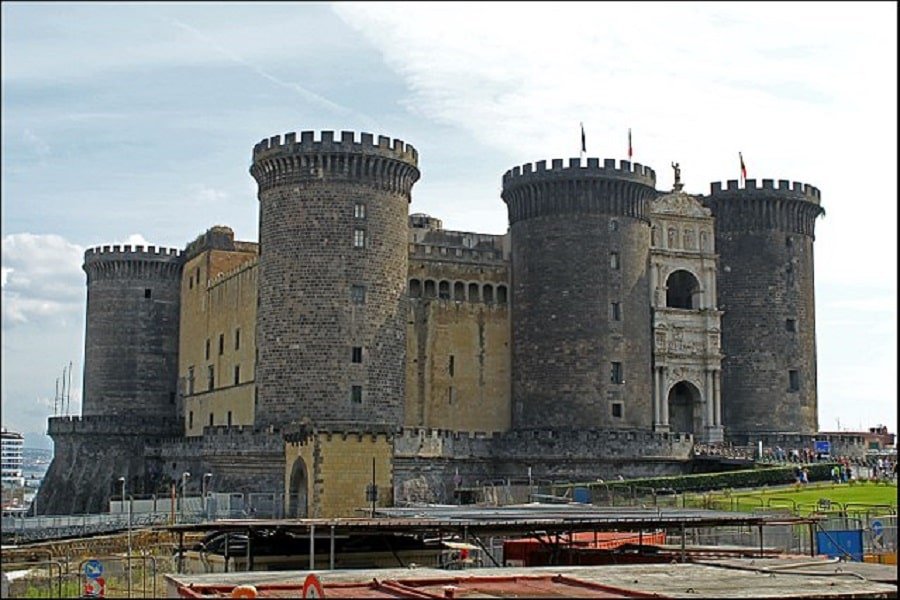
The last notable castle is located in the city of Naples, Italy. It stands as an iconic symbol of the city and is one of its most prominent landmarks.
Castel Nuovo played a crucial role in the history of Naples and southern Italy. It served as a seat of power for various rulers, including the Angevin, Aragonese, and Spanish dynasties. It witnessed significant political events, royal ceremonies, and battles, making it an important symbol of authority and governance throughout the centuries.
The architectural design of Castel Nuovo is impressive and reflects the transition from French Gothic to Italian Renaissance styles. It also stands as a testament to Naples’ rich cultural heritage.